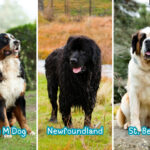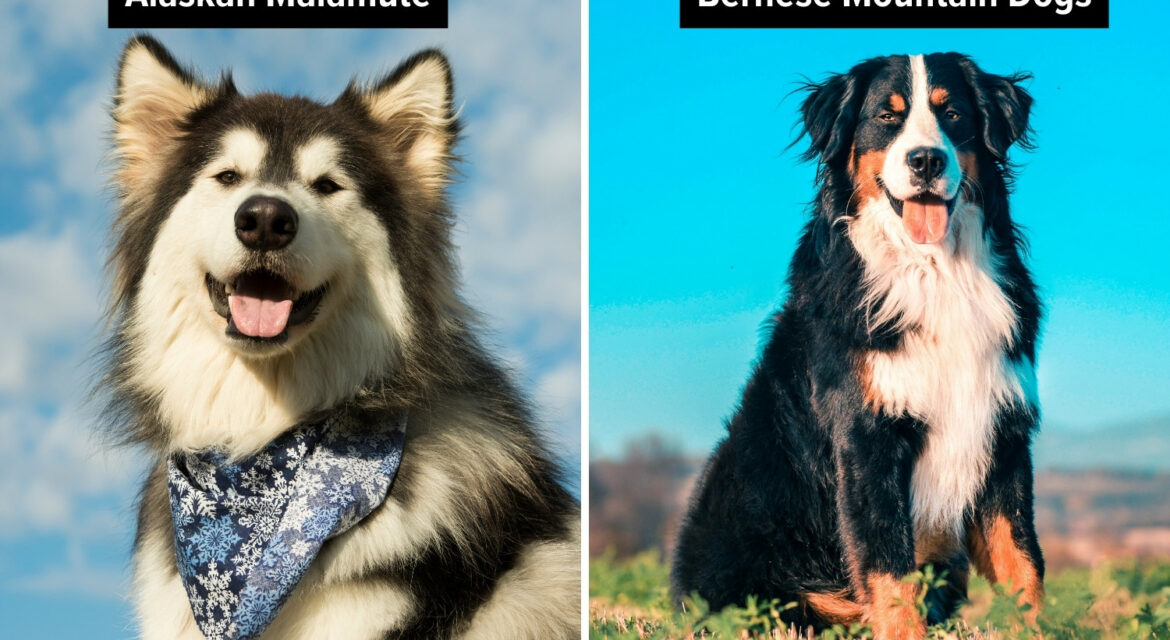 6 May
6 MayAlaskan Malamute vs Bernese Mountain Dog
Choosing the right dog breed for your lifestyle is crucial, and today we’re focusing on two beloved breeds: the Alaskan Malamute and the Bernese Mountain Dog. Both breeds have unique characteristics and charm, but understanding their differences can help you decide which might be a better fit for your home and lifestyle.
Whether you’re looking for a robust companion to join you on outdoor adventures or a gentle giant to share cozy moments with, this comparison will provide you with essential insights into their temperaments, care needs, and overall suitability for different living environments.
Alaskan Malamute vs Bernese Mountain Dog: Which Is Right For You?
The main difference between an Alaskan Malamute and a Bernese Mountain Dog lies in their temperament and energy levels, making them suitable for different lifestyles. Alaskan Malamutes are highly energetic, independent, and require extensive exercise, ideal for active individuals who enjoy outdoor activities and are experienced in handling strong-willed breeds. On the other hand, Bernese Mountain Dogs are more relaxed and affectionate, making them perfect companions for families with children and other pets, thanks to their gentle and loyal nature.
| Feature | Alaskan Malamute | Bernese Mountain Dog | Best Fit For |
|---|---|---|---|
| Size | Large; 75-85 pounds (34-39 kg) | Large; 70-115 pounds (32-52 kg) | Both suitable for those who like large breeds. |
| Lifespan | Typically 10-14 years | Generally 7-10 years | Those looking for potentially longer companionship might prefer Malamutes. |
| Energy Level | High; needs a lot of exercise | Moderate; requires regular exercise but less intense than Malamutes | Active individuals or families should consider Malamutes; those with moderate activity levels might prefer Bernese. |
| Temperament | Independent, strong-willed, friendly | Affectionate, loyal, gentler than Malamutes | Those who enjoy training and challenges might lean towards Malamutes; those seeking a more relaxed companion could prefer Bernese. |
| Coat and Grooming | Thick double coat; heavy shedding; requires regular grooming | Thick double coat; heavy shedding; requires regular grooming | Both require significant grooming; no clear preference based on grooming needs. |
| Climate Suitability | Better suited for cold climates | Well-suited for cooler climates but can adapt to various conditions | Those in colder climates might find either breed suitable, but Malamutes are particularly adept. |
| Training | Intelligent but can be stubborn; requires firm, consistent training | Intelligent and usually easier to train than Malamutes | Novice owners might prefer the more trainable Bernese; experienced trainers might enjoy the challenge of a Malamute. |
| Family and Pet Compatibility | Good with children and can be trained to live with other pets | Excellent with children and generally good with other pets | Families with young children or other pets might find Bernese more immediately suitable. |
| Health Concerns | Generally healthy; some risk of hip dysplasia, bloat | Prone to more health issues like cancer, joint problems | Those concerned about health issues might lean towards Malamutes due to fewer breed-specific health problems. |
| Cost of Ownership | Similar initial cost; potential for fewer health-related expenses | Similar initial cost; can have higher long-term healthcare costs | Cost-sensitive owners might find Malamutes slightly more economical due to health considerations. |
When choosing between these two, consider your living environment, activity level, and the time you can dedicate to training and exercise, as both breeds require substantial grooming and can have significant health needs.
Alaskan Malamute Origin and History
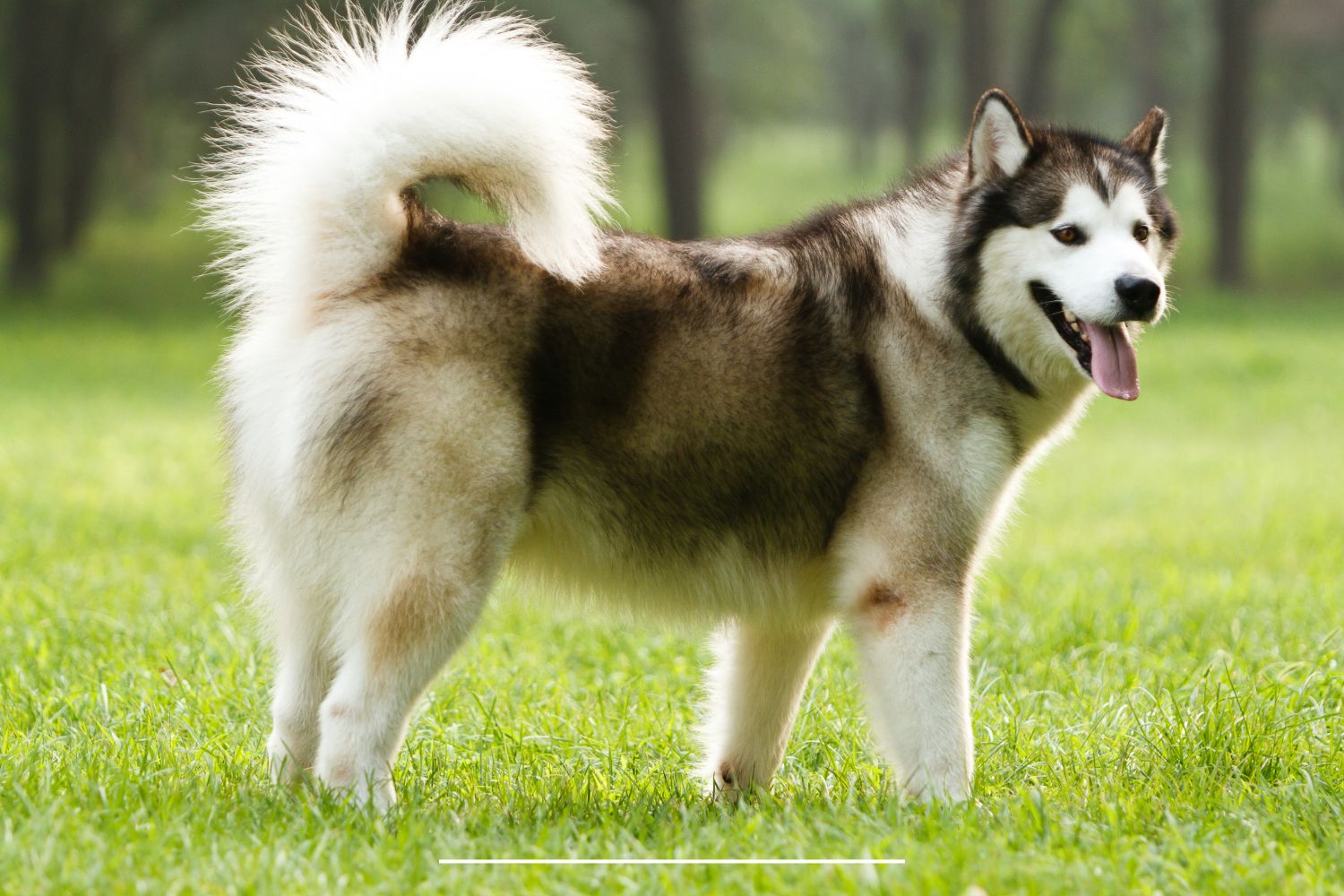
The Alaskan Malamute, one of the oldest Arctic sled dogs, has a rich history that dates back thousands of years. Originating from the harsh and cold Arctic region, specifically from the Mahlemut tribe of Alaska, these dogs were bred for their strength and endurance, primarily used for heavy sledding, hauling freight, and hunting seals.
Recognized for their vital role in survival within polar conditions, Malamutes were also cherished as family dogs, living closely with the native peoples.
General Characteristics
- Size: Alaskan Malamutes are robust and large dogs, typically weighing between 75 to 85 pounds, although some can be larger, especially males.
- Appearance: They exhibit a powerful, wolf-like build with a dense double coat ranging in colors from light gray to black, with shades of sable and red, and always with white markings. They have a broad head with a striking face mask accentuating their almond-shaped, brown eyes and upright, triangular ears.
- Temperament: Known for their friendly and outgoing nature, Malamutes are incredibly loyal and playful. They possess a strong pack instinct and enjoy being part of the family unit. Their high energy levels and strength make them suitable for active owners who can provide them with ample exercise. Despite their size, they are not guard dogs but are instead welcoming to most people. However, their independent streak can challenge training and require consistency and patience.
Alaskan Malamutes are wonderful companions for those who can match their activity level and commit to their social and grooming needs. They thrive in environments where they can participate in daily activities and have space to roam and play.
Bernese Mountain Dog Origin and History
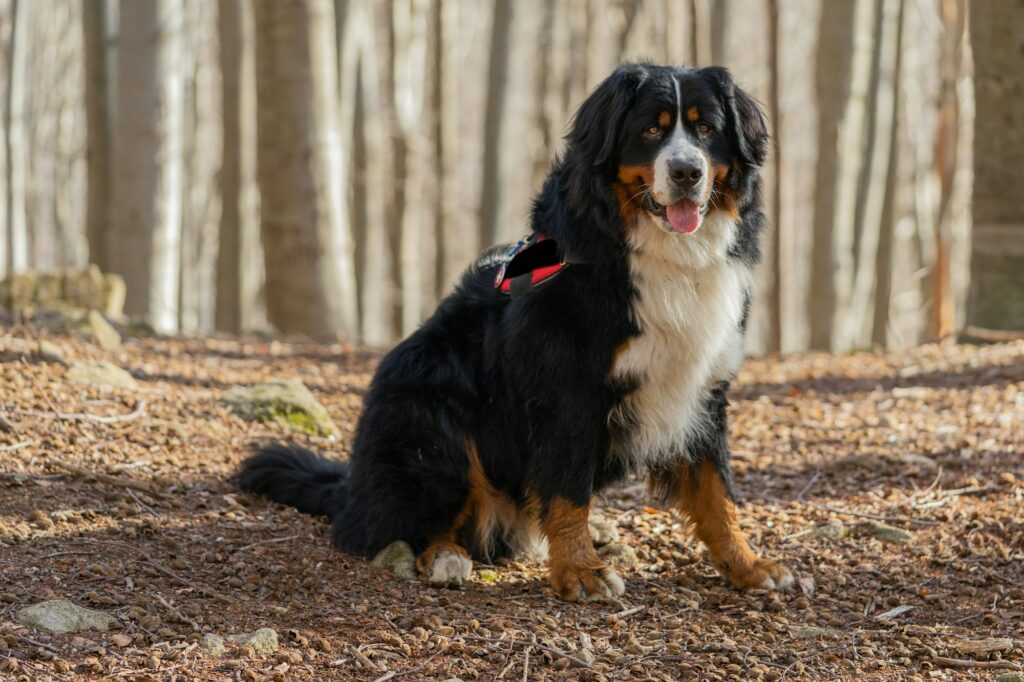
The Bernese Mountain Dog originates from the Swiss Alps, specifically the canton of Bern, hence their name. This breed was traditionally used as a farm dog for a variety of tasks including herding cattle, pulling carts, and serving as a watchdog.
Developed from crosses between farm dogs from the Swiss Alps and Mastiff-type dogs brought into Switzerland by the Romans, Bernese Mountain Dogs were invaluable assets for handling the challenges of farm life. Their strength and versatility made them indispensable to the local farmers and dairymen.
General Characteristics
- Size: Bernese Mountain Dogs are large, with males typically weighing between 80 to 115 pounds and females slightly smaller. They are well-muscled, with a solid and balanced stature.
- Appearance: They are known for their striking tri-colored coat—black with white chest markings and rust-colored accents above the eyes, on the sides of the mouth, and on the legs. Their coat is long and silky, requiring regular grooming to maintain its condition and manage shedding. The breed has a regal appearance, with a gentle expression reflected in their dark, almond-shaped eyes.
- Temperament: Bernese Mountain Dogs are known for their calm and affectionate demeanor. They are particularly good with children, for whom they often display a patient and protective nature. Though they may initially be reserved with strangers, they are not aggressive and usually warm up quickly. They are intelligent and eager to please, which makes them relatively easy to train compared to more independent breeds. However, their sensitivity means they respond best to positive reinforcement techniques.
Bernese Mountain Dogs thrive in environments where they can be close to their families. They are suitable for owners who can provide them with gentle, consistent training and who appreciate a dog that can participate in family activities without the high energy demands of more active breeds.
Their loving nature and striking looks make them a beloved companion in many homes worldwide.

Who Should Choose an Alaskan Malamute and Who Should Opt for a Bernese Mountain Dog?
Choosing an Alaskan Malamute
Individuals or families considering an Alaskan Malamute should be prepared for a high-energy dog that thrives on vigorous exercise and interaction. Malamutes are best suited for those who lead an active lifestyle and are enthusiastic about involving their dog in hiking, running, or even pulling sports like skijoring and carting.
Due to their endurance and love for cold weather, they are excellent companions for outdoor adventurers.
Potential owners should also be prepared for a strong-willed dog. Training a Malamute requires patience, consistency, and experience with dog behavior, as they can be stubborn and independent. They are not recommended for first-time dog owners. Additionally, because of their pack-oriented nature, they do well in homes where they are not left alone for long periods; they thrive on companionship and interaction.
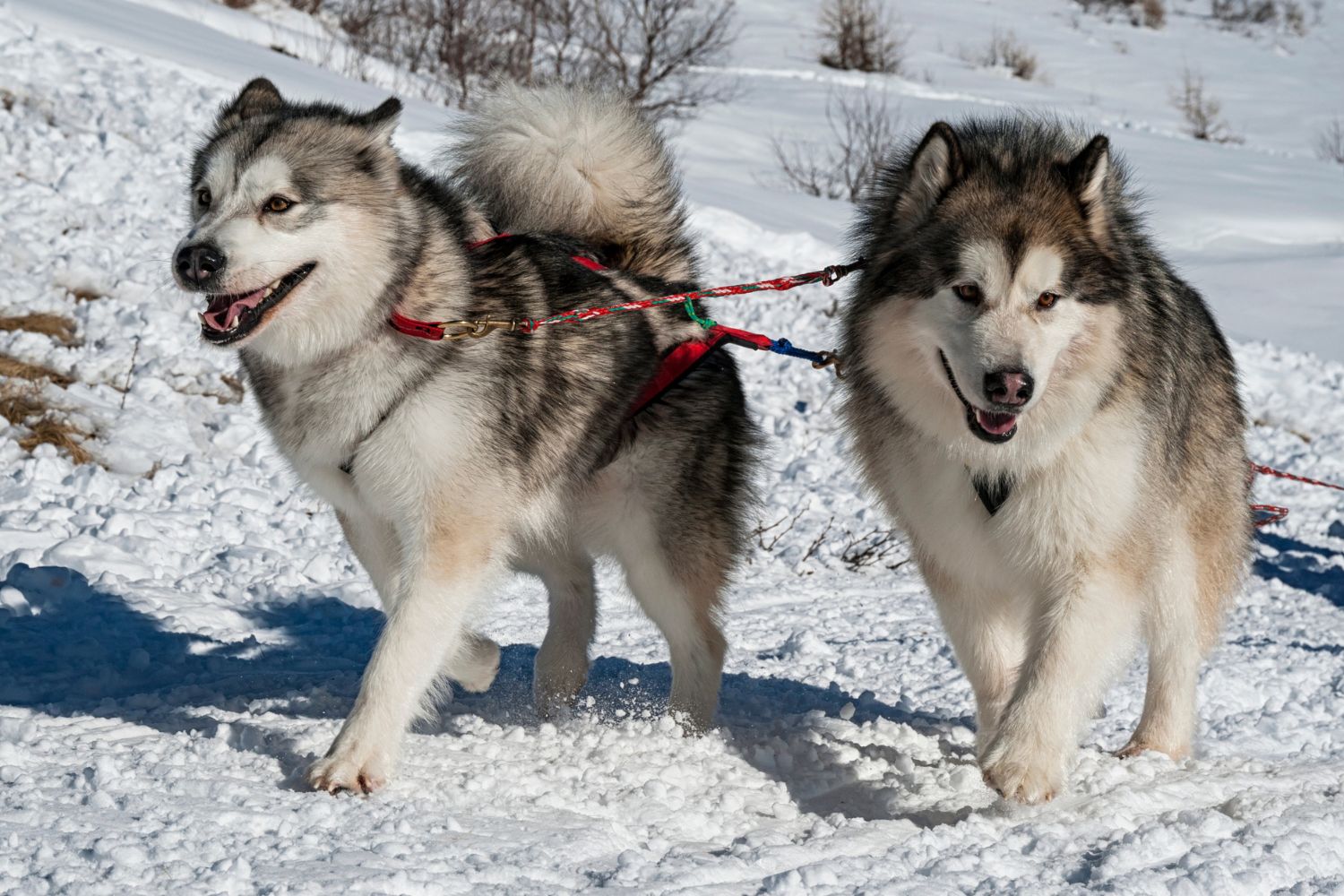
Choosing a Bernese Mountain Dog
Bernese Mountain Dogs are ideal for families looking for a more relaxed and affectionate companion. Their gentle and calm demeanor makes them excellent pets for households with children. They are protective yet friendly, making them good watchdogs without the aggressiveness associated with guard dogs. Bernese are also known for their loyalty and tend to form strong bonds with family members.
These dogs are well-suited to those who can provide a loving home with enough space for a large dog but might not want the high-energy lifestyle required by more active breeds.
While they do need regular exercise, the intensity and frequency are less demanding than those required for a Malamute. They are also a good choice for novice owners because of their eagerness to please and relative ease of training.
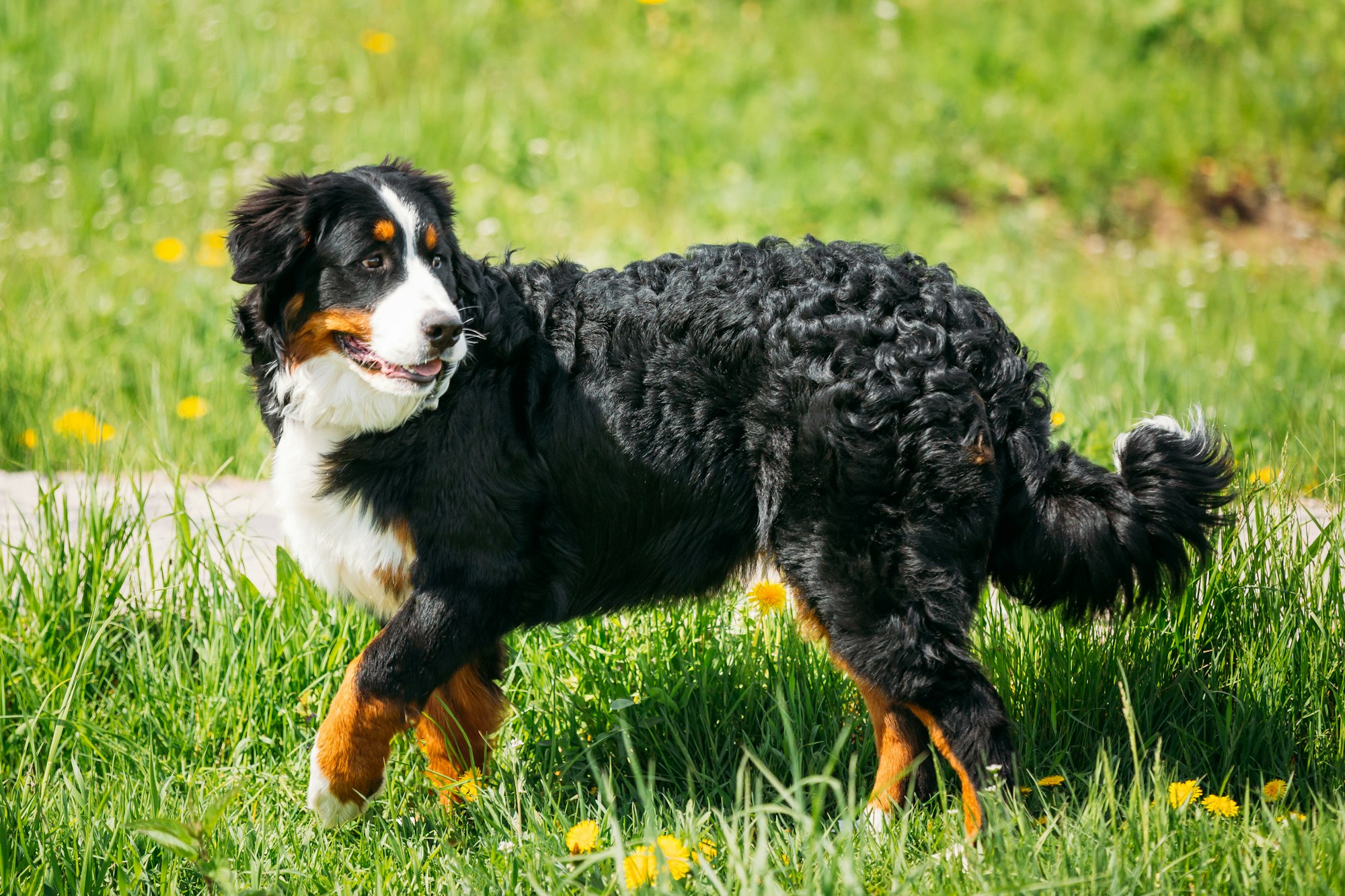
Considerations for Both Breeds
Both breeds require significant grooming due to their thick coats, which shed considerably, especially during the change of seasons. Owners should be prepared to invest time in regular brushing and maintenance to control shedding and maintain coat health.
Furthermore, both breeds can be prone to specific health issues, so potential owners should ensure they can handle possible veterinary costs. Prospective owners should seek reputable breeders who perform genetic testing to minimize the risk of inherited conditions.
Ultimately, the choice between an Alaskan Malamute and a Bernese Mountain Dog should be based on an honest assessment of your lifestyle, household environment, and the amount of time and energy you can devote to exercise, training, and companionship. Both breeds bring immense joy and unique characteristics to a home, but they fit best with owners whose lifestyles align with the breed’s needs.




